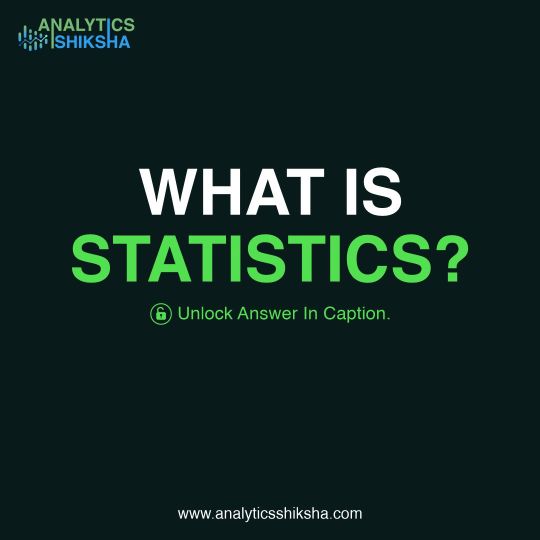#quantitativeanalysis
Explore tagged Tumblr posts
Text

I hate graphs I hate graphs I hate graphs I hate graphs
8 notes
·
View notes
Text

Fluorescence Spectrophotometer LFS-A14
Labtron Fluorescence Spectrophotometer features a 150W xenon lamp with a 365nm excitation wavelength. It includes interference optical filters and a C-T diffraction grating, providing high sensitivity for precise analysis, wavelength and time scanning, and excellent low-detection sample sensitivity.
0 notes
Text
Crafting Compelling Narratives and Visuals for Econometrics Assignments
Econometrics entail much more than equations, empirical, and statistical terms. It takes great skill to ensure that econometric analysis gets written in an engaging style and uses adequate visualizations. Writing a compelling story behind the data (accompanied by explanations and interpretations of the visualizations) is a vital skill set. For students aspiring for an "A" grade, this becomes essential. It is no longer about just explaining the results but narrating the story behind the data to enlighten the reader about the information hiding behind it, i.e. the core economic insights.

A well-written narrative with visualizations could enrich complex econometric models to render an analysis that is engaging and easy to consume. Interpretation is equally important as presenting the correct results. For those new to the field, turning to econometrics homework help services would be a step ahead through the acquisition of new methods, and tricks, and divulging creative ways of presenting data. They help students complete their assignments and familiarize them with the modern tools and methods of analyzing and visualizing data that can take their work to a whole new level.
How to Craft a Compelling Narrative for Econometrics Assignments
Understand the Problem You're Addressing: The first important step in writing a compelling narrative is to have a clear and deep understanding of the research question. What kind of economic relation do you intend to investigate? For example, A researcher might be required to determine the correlation between the level of education and income. Knowing this, your narrative has to be about how your econometric model aids in explaining this relationship.
Example: If your model has an assumption of a positive relationship between education and income, your story should tell why this makes sense given what happens in theories such as increased human capital as a result of education means better chances to secure better-paying jobs.

Interpret the Statistical Results: Learners often have difficulty interpreting statistical results in simple English. One of the critical components of a robust econometric narrative revolves around the results and extracting insights from it. For example:
P-values: Don’t merely say that a p-value is less than 0.05 and that the relationship between the two variables is statistically significant but explain its importance from a statistical and analytical perspective.
Coefficients: While reporting several coefficients do not just produce the numbers but what these figures mean. For instance, if a coefficient for education is 0.8, explain further that each additional year of education is equivalent to an increase in income by 8%.
Link Results to Economic Theory: A good report will not just explain results but link them to the existing economic theory or real-world implications. This shows that you not only comprehend the data but also its relevance.
Tip: A good question that should always be asked when reading results is: what does this result tell me about the real world? Does it make sense in light of what I have learned in the course? If not, what can the reasons be for such discrepancy?
Use Clear, Digestible Language: Another common mistake some students make is that they assume using a lot of technical terms will help them in creating a good impression in the mind of their professor. In reality, clarity is key. It is suggested that your narrative should be easily followed by anyone having basic knowledge of econometrics. Avoid the use of technical jargon and when you have to, ensure you explain them in an easy-to-digest manner to the readers.
Cheat Code: Write in a such way as if you are explaining the stuff to your friend who is an amateur in econometrics.
How to Create Effective Visualizations for Econometrics
In econometric analysis, visualization helps make your work more appealing and easier to understand. However, the type of visual that is needed to convey the information to the audience should be proper according to the type of data.

Below are some tips for crafting impactful visualizations:

1. Choose the right type of Chart based on the Data: The type of data you’re going to represent has a lot to do with the chart you use for its visualization. Choosing the wrong type of chart will mislead the reader. Here are a few examples:
1. Scatter plots are ideal for showing relationships between two continuous variables. They’re great for visualizing regression models. 2. Bar charts work well when comparing different groups or categories. 3. Histograms can help visualize the distribution of a single variable, which is useful when assessing normality or skewness in data.
2. Label Charts Clearly: Label your axes and always provide a title to your visualizations. Whenever the chart consists of several lines or bars, ‘legend’ should be included as a must-have item to avoid confusion when comparing.
Cheat Code: Write a summary under this chart to indicate what this graph is all about. Not only does it help to explain the visualization but also adds weight to your narrative.
3. Highlight Key Findings: one should focus on the characteristics and important aspects of the visuals. Suppose, if you found out high positive correlation in your scatter plot, you may wish to include a regression line for the relation or shade the area that denotes significant results.
Tip: Use colors sparingly. If the chart is filled with colors, it becomes cluttered to look at. Adopt a simple color scheme to emphasize the important aspects.
4. Incorporate Visuals with Your Narrative: Most people make the mistake of segregating visuals from the narrative. Rather, your visuals should play a supporting element of your story. Cite them as figures in your text (For example illustrated in figure 1, there is a progressive increase…’) and rely on them in explaining the analysis of the data.
Cheat Code: Ask yourself – Does the chart I am creating provide some value to the story? If not, rethink whether it is really required in your case.
Case Study Example
Consider a case study analyzing the effect of minimum wage increases on employment levels across different sectors:
1. Objective: To assess the impact of increasing the minimum wage on job losses in low-wage sectors.
2. Data Collection: Collect research information from government labor statistics over several years.
3. Analysis: Regression analysis should be conducted in an attempt to determine the correlation between minimum wage and employment levels.
4. Narrative Development:
Introduce characters (e.g. workers in the retail and manufacturing industry).
Describe and share concerns and issues (e.g., business owners as to why their labor cost is increasing).
Make presentations (e.g., regarding evidence of little or no effect of policies on employment).
5. Visuals:
Produce scatter graphs for employment trends before and after changes in wages.
Employ bar graphs to illustrate the comparison among different sectors.
Get Better Grades in Your Econometrics Coursework with Our Homework Help Services
New to the complex concepts of econometrics, students are often faced with the difficulty of conveying results effectively together with presenting eye-catching infographics, dashboards, and insightful visualizations. Our econometrics homework help support is a kind of service that is incredibly helpful, as it allows a student to complete their work that requires analytical methodologies, insightful presentation, and mathematical calculations within a short time in the most precise and presentable manner. Besides helping students with their econometrics assignments our service also provides clarification on the correct use of econometric techniques for students.
The usefulness of choosing Econometrics Homework Help Expert
1. Enhanced Presentation Skills: Presentation is the key to any econometric analysis. Our service assists students in writing impressive narratives and compelling visualizations for the results to be effectively conveyed. From class assignments to project presentations, or research thesis, our expert assistance can surely transform raw data into visually appealing stories that best describe the results in a meaningful way.
2. Expert Use of Statistical Software: Econometric analysis highly depends on the proficiency of statistical software. We are familiar with tools such as SAS, SPSS, Minitab, Jamovi, and RStudio for creating compelling analyses.
3. Comprehensive Analytical Support: Students are not often very familiar with econometric methods and struggle when performing complex analyses. Our service offers comprehensive support for performing various analyses such as regression analysis, hypothesis testing, or analysis of the time series data. Our one-on-one assistance eases the understanding of various concepts and their application to real-world data.
Strong Points of Our Service
Compelling and Professional Writing: Contact our econometricians to strengthen the quality of your work. Our experts ensure that your analyses are not only right but also relevant, presentable, and interesting.
Accurate Analysis: Accuracy is important to us. Every analysis we submit undergoes several checks to verify its correctness ensuring that the student gets the best results.
Comprehensive Reports: We submit comprehensive written reports with detailed explanations and interpretations, accompanied by outputs, plots, and codes. Such an approach helps enrich the student’s understanding of the topic or research question.
Amazing Visualization Tools: We employ appropriate visualization tools to create insightful charts and graphs to explain the data insights. This adds value to the presentation and report by making it visually appealing.
Guarantees for Students
Grade Guarantee: Our econometrics assignment help service is dedicated to meeting our client student’s expectations. We offer a grade guarantee – we assure that the papers produced do not go below the client’s expected quality standards and we provide free revisions until the client is satisfied.
Timely Delivery: We know the significance of time and make sure to submit all solutions before the deadline to help students submit their work without stress.
24/7 Support: We have a professional support team who is up and available anytime to attend to student’s inquiries or concerns related to their assignments.
Conclusion
The ability to write an interesting story out of your data and present it with visually appealing graphics is a crucial skill that leads to success. This gives you the power to transform data analysis assignments into insightful and engaging reports, along with connecting them with economic theory, complemented by the use of supported graphics and visualizations. Consult our econometrics homework tutor for support and assistance; it will introduce you to new methodologies, tools, and shortcuts that will reduce your workload and improve the quality of your analysis. Continued practice and the right resources in a student's arsenal can take those assignments to grade-A status.
Helpful Resources
To further enhance your skills in crafting compelling narratives and visuals for econometrics assignments, consider exploring these resources:
Principles of Econometrics by R. Carter Hill et al.
Mostly Harmless Econometrics by Joshua D. Angrist and Jörn-Steffen Pischke.
Data Visualization Tools:
Tableau for interactive visualizations.
R packages like ggplot2 for creating high-quality graphics.
#Econometrics#DataVisualization#AcademicWriting#NarrativeCrafting#StatisticsHelp#ResearchMethods#VisualStorytelling#StudentResources#AssignmentTips#QuantitativeAnalysis#EconometricsAssignments#DataAnalysis#AcademicSupport#LearningEconometrics#VisualCommunication
0 notes
Text
Waiting for the day people realise a pie chart has the same amount of processing as a pie purchased at a grocery store.
"Descriptive statistics" is the "organic ingredients" of maths.
#science#stemblr#education#descriptive statistics#statistics#1 AM post I hope I won't regret#quantitative analysis#quantitative statistics#maths#quantitativeanalysis#maths posting#critical thinking#academia#academics#STEM#stem#pie chart#math
0 notes
Text
What factors does AI use to predict stock market performance?
AI uses several factors to predict stock market performance, including:
1.Historical Data: Patterns and future movements are predicted by examining historical trends, trade volumes, and stock prices.
2. Technical Indicators: The process of evaluating market circumstances and forecasting price movements by employing technical analysis tools including moving averages, relative strength index (RSI), and Bollinger Bands.
3. Fundamental Data: Using financial indicators to assess a company's performance and stock value, such as revenue, profit margins, earnings reports, and other company-specific data.
4. Economic indicators: keeping an eye on macroeconomic variables that may have an impact on market performance, such as GDP growth, unemployment rates, inflation, and interest rates.
5. Sentiment in the market: Examining news stories, social media posts, and other materials to determine how the general public feels about equities.
6. Trends by Sector and Industry: Analyzing performance and trends within particular sectors or industries to see how they affect individual equities.
7. Quantitative Models: Utilizing machine learning and statistical models to forecast stock price movements and examine intricate correlations between several components.
8. Geopolitical Events: Taking into account how international ties, political developments, and world events affect market performance.
9. Alternative Data: Gathering additional information about market conditions by utilizing non-traditional data sources like online traffic, consumer spending trends, or satellite imagery.
10. Algorithmic Trading Patterns: Identifying and leveraging patterns and strategies used by other algorithmic traders to inform predictions.
By integrating these factors, AI models aim to provide more accurate and actionable insights into stock market performance.
#AIinFinance#StockMarketAnalysis#PredictiveAnalytics#MachineLearning#DataScience#AlgorithmicTrading#FinancialTechnology#InvestmentStrategies#MarketTrends#QuantitativeAnalysis
0 notes
Text

Are you a data collection method? Because just like a good survey, you’ve got all the right questions to get to the heart of what I need. .
#DataCollection#BusinessAnalysis#SurveyMethods#DataDriven#ResearchMethods#QualitativeData#QuantitativeAnalysis
1 note
·
View note
Text
Statistical Methods in Data Analytics
In the realm of data analytics, statistical methods are indispensable for making sense of vast quantities of data. These methods can be broadly categorized into two types: Descriptive Statistics and Inferential Statistics. Each of these plays a crucial role in extracting meaningful insights from data, a skill that is fundamental to any comprehensive data analytics course.
Descriptive Statistics
Descriptive statistics form the foundation of data analytics by summarizing and organizing data in a manner that is easily interpretable. This branch of statistics focuses on describing the main features of a data set quantitatively. Key measures in descriptive statistics include:
Measures of Central Tendency: These measures indicate where the center of a data set lies and include the mean, median, and mode. For instance, the mean provides the average value, while the median gives the middle value when data is sorted in ascending order.
Measures of Dispersion: These measures describe the spread of the data around the central value. Common measures of dispersion include range, variance, and standard deviation. The range provides a simple view of the spread by subtracting the minimum value from the maximum. Variance and standard deviation, on the other hand, offer more nuanced insights into how data points deviate from the mean.
Graphical Representation: Descriptive statistics also involve the use of graphs and charts to visually represent data. Histograms, bar charts, and box plots are popular tools that help in identifying patterns, trends, and outliers.
For anyone enrolled in a data analytics course, mastering descriptive statistics is essential. It provides the tools to summarize data succinctly and effectively, making it easier to communicate findings and identify areas for further analysis.
Inferential Statistics
While descriptive statistics provide a snapshot of the data, inferential statistics take analysis a step further by making predictions or inferences about a population based on a sample. This branch of statistics is crucial for decision-making processes in data analytics.
Hypothesis Testing: This is a core component of inferential statistics. It involves making assumptions (hypotheses) about a population parameter and then using sample data to test these hypotheses. Common tests include t-tests, chi-square tests, and ANOVA. For example, a t-test can determine if there are significant differences between the means of two groups.
Confidence Intervals: These intervals provide a range of values that are likely to contain the population parameter. They offer an estimated range believed to encompass the true value of the parameter with a certain level of confidence, typically 95% or 99%.
Regression Analysis: This method is used to model the relationship between a dependent variable and one or more independent variables. It is particularly useful in predicting outcomes and identifying trends. Linear regression, logistic regression, and multiple regression are commonly used techniques in data analytics.
Sampling Methods: Inferential statistics rely on samples, and the way these samples are collected affects the validity of the conclusions. Different sampling methods, such as random sampling, stratified sampling, and cluster sampling, ensure that the sample represents the population adequately.
A robust data analytics course will delve deeply into inferential statistics, equipping students with the ability to draw meaningful conclusions from data. By learning these techniques, analysts can go beyond mere description and start making informed predictions and decisions based on data.
Conclusion
Both descriptive and inferential statistics are pivotal in the field of data analytics. Descriptive statistics provide the tools to summarize and present data effectively, while inferential statistics enable analysts to make predictions and decisions based on data samples. Together, these statistical methods form the backbone of data-driven decision-making processes. For those pursuing a data analytics course, mastering these methods is crucial for transforming raw data into actionable insights.
#DataAnalytics#DescriptiveStatistics#InferentialStatistics#DataScience#Statistics#DataAnalysis#BigData#MachineLearning#DataVisualization#DataInsights#AnalyticsCourse#DataAnalyticsCourse#StatisticalMethods#DataDriven#PredictiveAnalytics#BusinessIntelligence#QuantitativeAnalysis#TechSkills#LearningDataAnalytics#DataScienceEducation
0 notes
Text

Discover the transformative insights of Federico Nutarelli, Ph.D., an influential authority in Machine Learning in Economics. With a fusion of advanced analytics and traditional economic theory, Federico unlocks hidden patterns within vast datasets, empowering businesses and policymakers with predictive capabilities. His research extends beyond commercial applications, shaping evidence-based policymaking for equitable resource allocation and sustainable development. Explore Federico's groundbreaking work to navigate the complexities of our interconnected world and embrace the future of economic analysis.
#Research#Innovation#Education#Collaboration#EconomicAnalysis#QuantitativeAnalysis#Networks#Business#IndustryInsights
0 notes
Text

Statistics in data science analyzes, interprets, and models data to uncover patterns, make predictions, and aid decision-making.
Stay tuned for the next post!
know more: https://www.analyticsshiksha.com
#statistics#StatisticalInsights#StatisticalTrends#AnalyticalStats#super30#artofproblemsolving#analyticsshiksha#checkyoureligibilty#super30dataanalyticsprogram#QuantitativeAnalysis#InsightfulData#datascience#dataanalytics#datasciencecourse#dataanalyticscourse#datasciencejobs#datanalyticsjobs#InformationTechnology#TechInnovation#DataManagement#DataProcessing#SuccessStories#ProblemSolving
0 notes
Text
Exploring the Future of Finance with GenerativeFinance (GEFI.io)

GenerativeFinance (GEFI.io) is a platform dedicated to the exploration and advancement of generative finance, a burgeoning field at the intersection of artificial intelligence (AI), machine learning, and financial services. As the creator of GEFI.io, I aim to provide a space where experts, enthusiasts, and newcomers can converge to delve into the nuances of this rapidly evolving domain.
What is Generative Finance?
Generative finance represents a new paradigm in financial services, leveraging AI and machine learning to create and optimize financial products and strategies. It encompasses the generation of novel financial instruments, enhancement of trading strategies, and prediction of market dynamics. The core of generative finance lies in its ability to utilize generative models - sophisticated algorithms capable of producing new data resembling training datasets - to forecast market trends and discern investment opportunities.
The Potential of Generative Finance
This innovative approach has the potential to transform key facets of the financial industry, including investment management, risk assessment, and trading. One of its most significant contributions is the capability to analyze vast datasets more efficiently, thereby unveiling novel growth and innovation opportunities. However, it's crucial to recognize that generative finance is still in its nascent stages, with various challenges and uncertainties that need to be navigated as it matures.
Key Topics Explored on GEFI.io
- Mathematics in AI: Understanding the pivotal role of mathematics in developing AI algorithms, including areas like linear algebra, calculus, probability, and statistics. - Natural Language Processing (NLP): Delving into NLP's role in AI and finance, exploring applications like language translation and sentiment analysis. - Big Data Algorithms and Technologies: Investigating how big data algorithms like MapReduce and technologies like Hadoop are shaping the future of finance. - Data Visualization Tools: Highlighting tools like Matplotlib and Tableau, crucial for interpreting complex financial data. - Machine Learning Algorithms and Tools: Covering a range of algorithms from linear regression to deep learning, and tools from TensorFlow to PyTorch. - Deep Learning: Focusing on advanced neural network structures and their applications in finance. - Blockchain Technology: Examining the impact of blockchain on finance, from cryptocurrencies to smart contracts. - Monte Carlo Simulations: Utilizing these simulations for financial modeling and risk analysis. - High-Performance Computing (HPC): Exploring the role of HPC in handling computationally intensive financial tasks. - Hardware Components: Understanding the hardware underpinning these technologies, from CPUs to GPUs and beyond.
Join Our Community
I invite you to join GEFI.io, whether you're a seasoned expert in generative finance or just starting your journey. Together, we can explore this exciting field, share insights, and contribute to shaping the future of finance. Visit GenerativeFinance (GEFI.io) to learn more and become part of this groundbreaking venture. Read the full article
#AIalgorithmsinbanking#AI-driveninvestment#data-drivendecisionmaking#financialdatamodeling#financialtechnology#GenerativeAI#machinelearninginfinance#marketbehaviorprediction#quantitativeanalysis#riskmanagement
0 notes
Text

Market Research Services in South Korea: We are among the best market research companies in South Korea for recruiting difficult-to-reach audiences and quality data collection and have in-depth experience in applying suitable methodologies across a wide range of different industries, geographies, and cultures. We are consistently making an impact on the growth of our clients’ businesses.
Types of different market research and data collection we do: -Face to Face Interviews -Computer-Aided Telephonic Interviews (CATI) -Computer-Assisted Personal Interview (CAPI) -Online Surveys -In-Depth Interviews -Focus Groups / Online Focus Groups
Planning consumer market research or online study in South Korea? Get a quote by email:[email protected] More info visit:https://bit.ly/3pqR61p #marketresearch#datacollection #dataanalysis#spadesurvey#datacollectionsouthkorea #marketresearchsouthkorea#southkorearesearch #qualitativeresearch#quantitativeanalysis #quantativeresearch#healthcaredatacollection
#marketresearch#datacollection#dataanalysis#spadesurvey#datacollectionsouthkorea#marketresearchsouthkorea#southkorearesearch#qualitativeresearch#quantitativeanalysis#quantativeresearch#healthcaredatacollection
0 notes
Text
Air Compressor Pump Market | Atlas Copco Aktiebolag, COLTRI, Compresstech Resources,Inc, Eaton Compressor
Introduction:
The introduction to the report serves as a gateway into the comprehensive world of the air compressor pump market. As industries continue to evolve and adapt to changing consumer demands and technological advancements, understanding the market dynamics becomes paramount for industry stakeholders. The report takes on the responsibility of offering a profound and all-encompassing analysis of the air compressor pump market, catering to the needs of a diverse audience that includes manufacturers, suppliers, distributors, and investors.
Scope and Purpose:
The report's primary goal is to provide invaluable insights that empower industry stakeholders to make informed decisions. Whether it's manufacturers seeking to refine their product offerings, suppliers strategizing their supply chain management, distributors gauging market trends, or investors evaluating potential opportunities, the report aims to be a comprehensive guide. It endeavors to illuminate the current status of the air compressor pump market while projecting its future trends.
Request for Sample Report:
Value to Industry Stakeholders:
Recognizing that knowledge is power, the report promises to deliver a wealth of information encompassing various aspects of the air compressor pump market. By delving into the intricacies of market dynamics, competition, growth avenues, challenges, and regional variations, the report seeks to equip its readers with an arsenal of insights. This information is not merely descriptive; rather, it's intended to be actionable, aiding stakeholders in making critical decisions that can shape their strategies and endeavors in the market.
Promising Comprehensive Analysis:
To fulfill its promises, the report assures a comprehensive analysis that leaves no stone unturned. It pledges to unravel the factors propelling the market's growth, dissecting shifts in consumer preferences and technological breakthroughs that are driving the demand for air compressor pump products. Simultaneously, it acknowledges that challenges and obstacles are part of any industry landscape, and it vows to illuminate these hurdles, be it economic uncertainties or the intense competition that often characterizes such markets.
Guiding the Path Forward:
As the report extends an invitation to its readers to explore its contents, it sets the stage for uncovering the competitive landscape. It introduces the major players in the air compressor pump market and their strategies, offering insights into what makes them thrive. This insight-rich analysis is meant to guide others on their path forward – whether it's to navigate the competition more effectively or to find inspiration in successful strategies.
Anticipation of Insights:
With an awareness that the market is not monolithic but rather a composition of various segments, the report pledges to provide a nuanced understanding of these segments. It promises to detail their sizes, potential growth trajectories, and key trends. This targeted knowledge assists stakeholders in carving out specialized strategies and ensuring optimal resource allocation.
Market Dynamics:
Factors Driving Market Growth: The section dedicated to the factors driving the growth of the air compressor pump market provides a comprehensive overview of the key forces propelling its expansion. It delves into a multi-dimensional analysis that underscores the multifaceted nature of this growth. The following aspects are discussed in detail:
Changing Consumer Preferences: The report recognizes that consumer preferences are ever-evolving, influenced by shifting lifestyles, demographics, and societal trends. It highlights how air compressor pump products are witnessing increasing demand due to consumers' heightened awareness of environmental sustainability and their preference for more efficient and eco-friendly solutions. As consumers increasingly seek products that align with their values, the market experiences a surge in demand.
Technological Advancements: A prominent driver of market growth is technological progress. The report emphasizes how advancements in manufacturing processes, materials, and product designs are enhancing the appeal and performance of air compressor pump products. These innovations lead to improved product efficiency, durability, and functionality, thereby attracting both consumers and industry players.
Government Regulations and Initiatives: The report recognizes the influential role of governments in shaping the market landscape. It details how regulatory frameworks and initiatives that promote the adoption of sustainable and environmentally friendly products are fostering the growth of the air compressor pump market. These regulations incentivize manufacturers, suppliers, and consumers to opt for air compressor pump products, driving their adoption and market penetration.
Potential Hindrances to Market Growth: In a balanced assessment, the report acknowledges that alongside growth drivers, there are potential impediments that can affect the trajectory of the air compressor pump market's expansion. These include:
Economic Uncertainty: Economic fluctuations and uncertainties can impact consumer spending patterns and investment decisions. The report discusses how economic downturns or uncertainties may lead to cautious spending behavior, affecting the demand for non-essential products such as air compressor pump goods. This economic sensitivity can create fluctuations in market growth rates.
Supply Chain Disruptions: The global supply chain is subject to various risks, including natural disasters, geopolitical tensions, and pandemics. The report highlights how disruptions in the supply chain can lead to production delays, shortages, and increased costs. Such disruptions can hinder the consistent availability of air compressor pump products in the market.
Intense Market Competition: The report acknowledges that as the air compressor pump market gains traction, competition among market players intensifies. It explores how the proliferation of products and companies in this sector can lead to price wars, reduced profit margins, and the need for innovative marketing and differentiation strategies to stand out.
Balancing Forces and Strategic Implications: By elucidating both the driving forces and potential obstacles, the report paints a holistic picture of the market dynamics. It enables industry stakeholders to navigate the competitive landscape with a deeper understanding of the forces at play. Manufacturers can align their innovation efforts with consumer preferences and regulatory trends, thereby enhancing their market position. Investors and decision-makers can be better prepared to address economic uncertainties and supply chain vulnerabilities. Overall, this section equips readers with insights to make strategic decisions that account for both growth opportunities and challenges in the air compressor pump market.
Experience Our Sample Report:
Exploring the Competitive Landscape:
The section dedicated to the competitive landscape of the air compressor pump market offers an intricate exploration of the market's key players, their strategies, and their impact on the industry. This segment aims to provide a comprehensive understanding of the market's dynamics, the role of major companies, and the strategies they employ to thrive. The analysis encompasses several critical aspects:
Major Players Introduction: The report begins by introducing the major companies that play a significant role in the air compressor pump market. These players are identified as key influencers within the industry and are pivotal in shaping its direction. The inclusion of their profiles establishes a foundation for the subsequent analysis.
Business Strategies: The report delves into the business strategies adopted by these major players. It explores their approaches to market penetration, product development, marketing, distribution, and customer engagement. This insight offers readers an understanding of the distinct paths these companies take to secure their positions and expand their market shares.
Product Portfolios: Understanding the range of products offered by these major companies is essential in comprehending their market presence. The report delves into their product portfolios, highlighting the diversity and uniqueness of their offerings. This analysis provides a glimpse into the variety of options available to consumers and underscores how companies differentiate themselves.
Recent Trends and Innovations: The competitive landscape analysis is not static; it also captures the dynamism of the market. The report explores the recent trends and innovations introduced by these major players. It sheds light on how these companies continually adapt to changing consumer preferences, technological advancements, and emerging market demands.
Financial Performance: The financial aspect of these companies is a vital indicator of their market strength and sustainability. The report offers insights into the financial performance of major players, including revenue figures, profit margins, and growth trajectories. This information provides a quantitative perspective on the players' market impact and resilience.
Some of the major companies in the Air Compressor Pump market are as follows: Atlas Copco Aktiebolag, COLTRI, Compresstech Resources,Inc, Eaton Compressor, ISC Sales Inc, Ingersoll Rand, NUAIR, Northern Tool, Rolair, Sumake, W. W. Grainger
Strategies for Sustaining Position:
By presenting a holistic view of the competitive landscape, this section allows readers to glean insights into the strategies employed by major companies to maintain their positions:
Differentiation: Companies strive to differentiate themselves from their competitors. The report reveals how major players leverage unique product features, quality, branding, and customer experiences to set themselves apart in the market.
Innovation: Innovation is a cornerstone of success. By exploring recent trends and innovations, the report illustrates how companies continuously invest in research and development to stay ahead of the curve and meet evolving customer needs.
Market Penetration: Understanding the strategies for expanding market presence is crucial. The report discusses how companies approach entering new markets, expanding their customer base, and increasing their market share.
Adaptability: The competitive landscape is subject to change. Companies that exhibit adaptability in the face of shifting trends and challenges are more likely to sustain their positions. The report highlights how major players adjust their strategies in response to market dynamics.
Customer-Centric Approaches: Successful companies prioritize their customers. The report showcases how major players tailor their products and services to align with customer preferences, creating lasting relationships and fostering brand loyalty.
Request a Glimpse of Our Sample Report:
In-Depth Market Segmentation Analysis:
The report dedicates a section to delve into the market segmentation of the air compressor pump market, focusing on two specific segments named "Type" and "Application." This segmentation analysis serves as a critical framework for understanding the intricacies of the market's composition and potential. The following details are likely explored in this section:
Segment Characteristics: The report initiates the analysis by outlining the unique characteristics that define each segment. Whether these segments are categorized based on product types, customer demographics, use cases, or other distinguishing factors, the report provides a clear picture of how these segments are defined and differentiated.
Market Size: Understanding the size of each market segment is crucial for gauging its significance within the overall market landscape. The report likely provides quantitative data to illustrate the market share and contribution of "Type" and "Application" segments to the entire air compressor pump market. This information helps stakeholders appreciate the relative importance of each segment.
Growth Potential: Beyond current market size, the report delves into the growth potential of these segments. It explores factors such as emerging trends, consumer behaviors, technological advancements, and regulatory influences that could drive the future expansion of these segments. This forward-looking perspective aids stakeholders in identifying where the market's growth opportunities lie.
Key Trends: The analysis likely captures the key trends specific to each segment. Whether it's changing consumer preferences, evolving technology adoption, or shifting regulatory landscapes, the report provides insights into the forces shaping the behavior of "Type" and "Application." These trends inform stakeholders about the directions these segments might take in the coming years.
Strategic Insights: The segment analysis extends beyond descriptive data to offer strategic insights. By understanding the characteristics, potential, and trends of "Type" and "Application," industry participants can make informed decisions. Manufacturers can tailor their product development strategies to meet the demands of these segments, and marketers can create targeted campaigns to reach specific customer groups.
Resource Allocation: Effective resource allocation is a cornerstone of successful business strategies. Armed with knowledge about the characteristics and growth potential of each segment, stakeholders can allocate their resources – whether it's budget, manpower, or marketing efforts – in a more focused and efficient manner. This optimization is crucial for maximizing returns on investments.
Competitive Dynamics: The segment analysis also influences the competitive landscape discussion. Understanding the major players operating within each segment and their strategies provides insights into how companies compete within specific niches. This knowledge helps stakeholders identify where there might be gaps in the market or opportunities for differentiation.
Market Segmentation:
Type: Positive Displacement Compression Pump, Speed Type Compression Pump
Application: Medical Treatment, Industry, Video, Transportation, Other
Strategic Decision-Making:
The comprehensive analysis of the "Type" and "Application" segments equips industry stakeholders with actionable insights:
Niche Strategies: Armed with a deep understanding of each segment's characteristics, stakeholders can craft specialized strategies to cater to the unique needs of "Type" and "Application" customers. This can involve tailored product offerings, marketing campaigns, and distribution approaches.
Growth Opportunities: The growth potential assessment informs strategic decisions. Stakeholders can identify which segment holds the most promise for expansion and investment, helping them prioritize their efforts and resources.
Mitigating Risks: Knowledge of key trends within each segment enables stakeholders to anticipate potential challenges and mitigate risks. They can proactively adapt to changing customer preferences, technological shifts, or regulatory changes.
Targeted Resource Allocation: With a clear picture of the market size and potential for each segment, stakeholders can allocate resources more effectively. This optimization enhances efficiency and increases the likelihood of achieving desired outcomes.
In sum, the segmentation analysis provides a roadmap for industry participants to navigate the diverse landscape of the air compressor pump market. By examining "Type" and "Application" segments in detail, the report empowers stakeholders with the insights needed to make informed decisions, seize growth opportunities, and tailor their strategies for success.
Sample Report Available at Your Request:
Exploring Regional Dynamics:
The section dedicated to the regional analysis of the air compressor pump market provides a comprehensive exploration of how the market fares across different geographical areas. This analysis recognizes that markets are not homogenous and that regional variations can significantly impact market dynamics. The report delves into the intricacies of each region – North America, Europe, Asia Pacific, Latin America, and the Middle East & Africa – to provide stakeholders with valuable insights. The analysis includes the following components:
Geographical Coverage: The report begins by outlining the regions under consideration: North America, Europe, Asia Pacific, Latin America, and the Middle East & Africa. Each of these regions represents a unique landscape with distinct economic, cultural, and regulatory characteristics that influence market behavior.
Sub-Regional Breakdown: Within each major region, the analysis likely provides a sub-regional breakdown. For instance, in Europe, the report might focus on countries like Germany, the U.K., France, Italy, and Spain. This detailed approach recognizes that even within larger regions, markets can differ significantly due to factors like language, culture, and consumer behavior.
Market Size and Growth Potential: The report quantifies the market size for each region and sub-region. This information provides a benchmark for understanding the relative significance of each market in the global context. Moreover, the analysis explores the growth potential of each region, considering factors such as economic growth, population trends, and market maturity.
Trends and Drivers: Regional trends and drivers play a pivotal role in shaping market behavior. The analysis delves into trends specific to each region, highlighting factors such as technological adoption rates, consumer preferences, and regulatory changes. These insights offer stakeholders a nuanced understanding of what is currently driving market dynamics.
Market Challenges: Recognizing that challenges vary by region, the report likely addresses obstacles specific to each geographical area. Regulatory complexities, economic constraints, and cultural nuances can all pose challenges that impact market entry and expansion strategies.
Competitive Landscape: Understanding the competitive dynamics within each region is crucial. The report may highlight major players operating in each region and their strategies. This insight helps stakeholders gauge the intensity of competition and assess the potential barriers to entry.
Culmination of Insights:
The conclusion of the report serves as the final crescendo in the symphony of insights, encapsulating the significance and value that the report brings to industry stakeholders. This section distills the entire report into a concise yet powerful message, reinforcing the key takeaways and underscoring the importance of the information presented.
Comprehensive and Practical Information: The conclusion reiterates the core objective of the report: to provide a comprehensive and practical resource for industry stakeholders. It emphasizes that the report goes beyond mere data collection and presents information in a way that is actionable and applicable to real-world business scenarios.
Insights into Market Dynamics: The report's value is highlighted by its ability to offer insights into the dynamic nature of the air compressor pump market. From dissecting market trends to uncovering growth opportunities and potential risks, the report equips stakeholders with the understanding needed to navigate this ever-evolving landscape.
Informed Decision-Making: One of the central themes of the conclusion is how the report empowers stakeholders to make informed decisions. By offering a deep understanding of market trends, competitive dynamics, and potential challenges, the report serves as a guiding light in an environment often characterized by uncertainty.
Strategic Guidance: The conclusion underscores that the report isn't just a collection of facts; it's a strategic tool. It aids manufacturers in refining their product offerings, guides suppliers in optimizing their supply chain, assists distributors in capitalizing on market trends, and helps investors in evaluating potential opportunities.
Holistic Perspective: The conclusion highlights that the report provides a holistic perspective on the air compressor pump market. It covers a range of critical aspects – from market dynamics to regional variations – ensuring that stakeholders have a comprehensive view that informs their decision-making.
Final Call to Action: The conclusion not only encapsulates the report's essence but also provides a call to action:
Informed Business Decisions: It urges readers to recognize the report's potential to transform their approach to business decisions. By absorbing the insights within, stakeholders are better equipped to navigate challenges, seize opportunities, and strategically position themselves in the market.
Continuous Adaptation: The conclusion suggests that success in the air compressor pump market requires a commitment to continuous adaptation. The insights offered in the report are not static; they reflect the ever-changing landscape. The report encourages stakeholders to view it as a guide for ongoing adaptation and evolution.
A Blueprint for Success: Ultimately, the conclusion presents the report as a blueprint for success. By leveraging the knowledge and insights presented within its pages, industry stakeholders can chart a course that capitalizes on market trends, mitigates risks, and embraces growth opportunities.
Closing Thoughts:
In essence, the conclusion encapsulates the report's journey. It emphasizes the report's role as a strategic tool, a navigator, and a decision-making companion in the complex world of the air compressor pump market. The provided text not only outlines the structural elements of a market report but also captures its essence – to inform, guide, and empower stakeholders as they navigate the dynamic and ever-evolving air compressor pump market.
#aircompressorpumpmarket#databookreport#keyplayers#competitionanalysis#significantproducts#marketdevelopments#COVID-19impact#regionaldynamics#futuretrends#qualitativeanalysis#quantitativeanalysis#businessdecisions#PositiveDisplacementCompressionPump#SpeedTypeCompressionPump#MedicalTreatment#Industry#Video#Transportation#Other
0 notes
Text

Fluorescence Spectrophotometer LFS-A13
Labtron Fluorescence Spectrophotometer features a long-life 150W xenon lamp for strong light intensity and high detection sensitivity across a 200-900nm spectral range. It includes dual monochromators for accuracy and imported photomultiplier tube detectors, ensuring precision in analysis.
1 note
·
View note
Text

Gate Way to Success - SBI PO
SBI PO is considered one of the most sought-after banking exams in the country. Successful candidates are posted as Probationary Officers in various branches of the bank. SBI PO exam comprises three phases-Prelims, Mains, and Psychometric Test, Interview & Group Exercises. The SBI PO exam consists of 3 subjects as per the Syllabus- English, Quantitative Aptitude, Reasoning. For more guidance and info. contact us on Whatsapp- 8851135978, Website- Gatway2Success.In, Gmail- [email protected]
#sbi#banking#bank#government#governmentjobs#english#englishlearning#englishteacher#englishlanguage#englishlessons#englishlesson#maths#mathematics#math#quantitative#quantitativeresearch#quantitativeanalysis#reasoning#gk#gkindia
0 notes
Text
Stock Market Analysis: Tools and Techniques for Informed Decision-Making

Equipping Yourself with the Right Tools and Techniques for Successful Stock Market Analysis. By Amir Shayan - Stock market analysis plays a crucial role in making informed investment decisions. Whether you are a seasoned investor or just starting your journey in the world of stocks, understanding the tools and techniques used in stock market analysis is essential for success. In this article, we will delve into the various aspects of stock market analysis and explore the tools and techniques that can help you make informed decisions. One of the primary methods used in stock market analysis is fundamental analysis, which involves evaluating a company's financial health, competitive position, and industry trends. By examining financial statements, analyzing key ratios, and understanding the company's competitive advantage, investors can gain valuable insights into a company's growth potential and future prospects. Technical analysis, on the other hand, focuses on studying price patterns, trends, and chart indicators to predict future price movements. It involves using various technical tools and indicators to identify entry and exit points for trades. Technical analysis is particularly useful for short-term traders who aim to capitalize on short-lived price fluctuations. Valuation methods help investors determine whether a stock is overvalued or undervalued. Common valuation techniques include price-to-earnings (P/E) ratio analysis, price-to-sales (P/S) ratio analysis, and discounted cash flow (DCF) analysis. These methods provide insights into the relative value of a stock compared to its earnings, sales, and cash flow potential. Market sentiment analysis involves monitoring news, sentiment indicators, and investor surveys to gauge market sentiment and identify potential trends. By understanding the overall sentiment of investors, you can align your investment strategy accordingly. Risk management techniques are crucial for mitigating potential losses and protecting your capital. Diversification, setting stop-loss orders, and analyzing portfolio risk are some of the risk management strategies employed by successful investors. Quantitative analysis involves using statistical models and quantitative factors to analyze stock prices and develop trading strategies. This approach utilizes mathematical algorithms and historical data to identify patterns and trends. Making informed investment decisions in the stock market requires a deep understanding of the dynamics, trends, and factors that influence stock prices. Stock market analysis is a vital process that helps investors gain insights into the financial performance, valuation, and growth prospects of companies. By utilizing various tools and techniques, investors can make more informed decisions and increase their chances of success in the market. In this comprehensive guide, we will explore the essential tools and techniques used in stock market analysis and how they can be leveraged to make informed investment decisions. - Fundamental Analysis: - Understanding the company's financial statements - Evaluating key financial ratios - Analyzing the competitive landscape and industry trends - Assessing management quality and corporate governance - Technical Analysis: - Utilizing charts and patterns to identify trends and price levels - Applying technical indicators for buy and sell signals - Using moving averages and oscillators to gauge market momentum - Conducting volume analysis for confirming price trends - Valuation Methods: - Price-to-Earnings (P/E) ratio analysis - Price-to-Sales (P/S) ratio analysis - Dividend Discount Model (DDM) - Discounted Cash Flow (DCF) analysis - Market Sentiment Analysis: - Monitoring news and sentiment indicators - Analyzing investor sentiment surveys - Tracking social media sentiment - Assessing market breadth indicators - Risk Management Techniques: - Diversification across sectors and asset classes - Setting appropriate stop-loss levels - Analyzing and managing portfolio risk - Incorporating risk-reward analysis in decision-making - Quantitative Analysis: - Using statistical models for predicting stock prices - Applying quantitative factors for stock selection - Developing and backtesting trading strategies - Utilizing algorithmic trading techniques - Macro-economic Analysis: - Monitoring economic indicators - Assessing interest rates and monetary policy - Analyzing geopolitical events and their impact on the market - Understanding the correlation between economic factors and stock prices
Conclusion:
Stock market analysis is a critical component of successful investing. By utilizing a combination of fundamental analysis, technical analysis, valuation methods, market sentiment analysis, risk management techniques, quantitative analysis, and macro-economic analysis, investors can make informed decisions and increase their chances of achieving their financial goals. It is important to note that no single tool or technique guarantees success in the stock market. A holistic approach that combines multiple analytical methods, alongside careful consideration of risk and reward, is essential for making well-informed investment decisions. As an investor, it is crucial to continuously educate yourself and stay updated on market trends, new tools, and emerging techniques in stock market analysis. By building a strong foundation of knowledge and utilizing the right tools and techniques, you can enhance your ability to make informed decisions and navigate the stock market with confidence. Remember, successful investing requires discipline, patience, and a long-term perspective. With a commitment to continuous learning and leveraging the power of stock market analysis, you can enhance your investment outcomes and achieve your financial goals. Read the full article
#fundamentalanalysis#informeddecision-making#investmentstrategies#macro-economicanalysis.#marketsentimentanalysis#quantitativeanalysis#Riskmanagement#stockmarketanalysis#Technicalanalysis#valuationmethods
0 notes
Text

Completing your SPSS homework successfully requires the right resources at your fingertips. As an expert in SPSS, I highly recommend the following top five resources that will provide invaluable assistance. These resources include official SPSS documentation and tutorials, specialized SPSS books and textbooks, online video tutorials and courses, SPSS forums and communities, and academic support from your university or college.
For any further queries, reach us at: [email protected] or call us at: +1(650)472-5953
#SPSSHomework#SPSSAssignment#SPSSHelp#DataAnalysis#Statistics#ResearchMethods#SPSSExpert#SPSSSupport#DataManagement#QuantitativeAnalysis#StatisticalSoftware#DataVisualization#SPSSTips#DataProcessing#AcademicHelp#SPSSTutorials#DataScience#DataAnalytics#SPSSConsulting#SPSSCommunity
0 notes